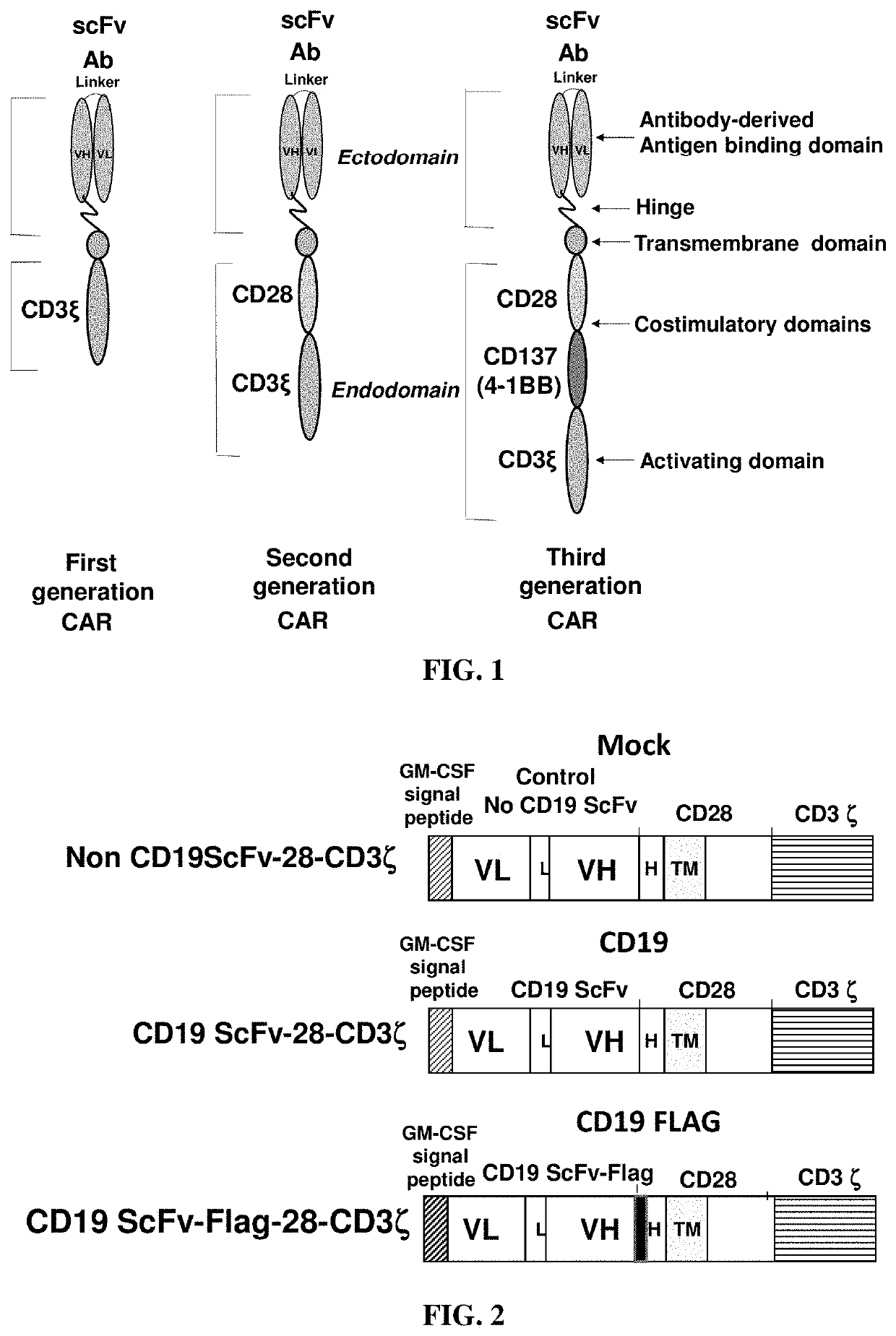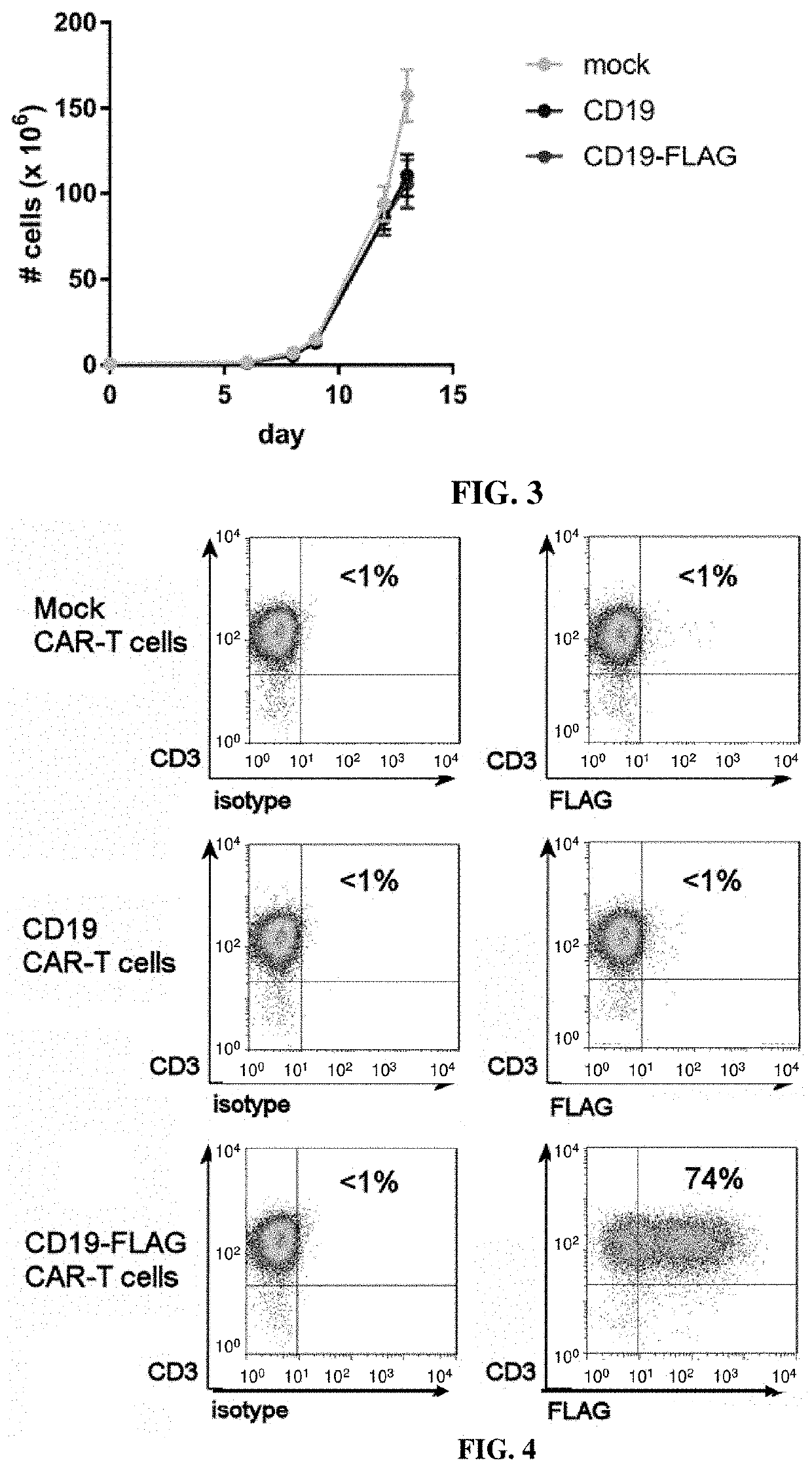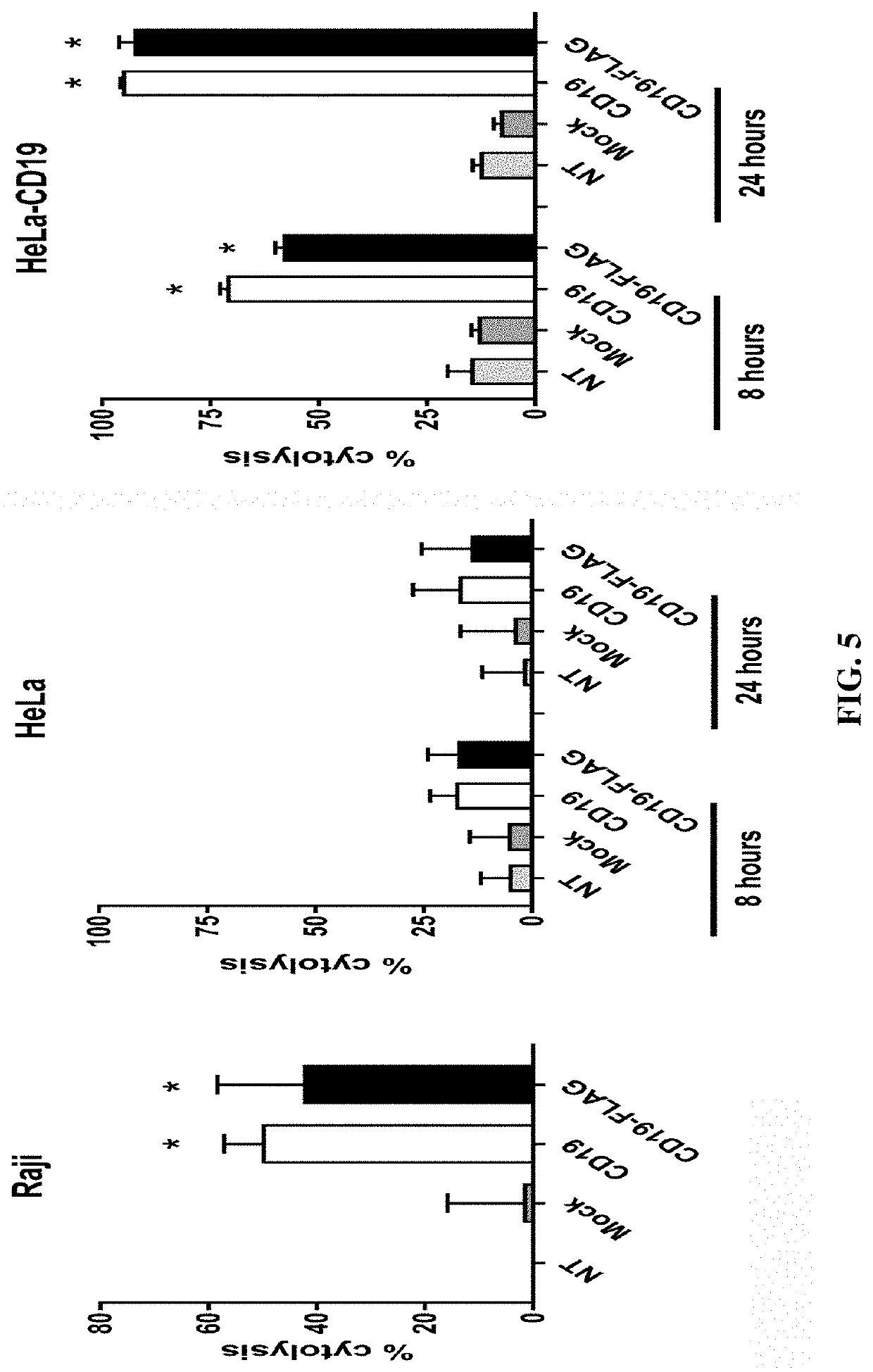Flag tagged CD19-CAR-T cells
a technology flag tags, which is applied in the field of flag-tagged cd19-cart cells, can solve the problems of car t cells being potentially damaged by normal tissues and limited use of car t cells,
- Summary
- Abstract
- Description
- Claims
- Application Information
AI Technical Summary
Benefits of technology
Problems solved by technology
Method used
Image
Examples
example 1
Cell Lines
[0051]We generated a novel solid tumor xenograft model using cervical cancer HeLa cells overexpressing CD19 in immunodeficient mice. This model allows us to study hematological cancer targets in the context of a solid tumor microenvironment and its associated inhibitory factors, such as immune checkpoint pathways (PD-1, CTLA-4, LAG-3), angiogenesis / vasculogenesis, hypoxia and Treg cells. For example, PD-1 inhibition was recently shown to increase CAR-T cell efficacy (Devaud et al, 2013, Clin Cancer Res 19, 5636-5646).
[0052]HeLa cervical carcinoma cells were purchased from the ATCC (Manassas, Va.) and cultured in DMEM (GE Healthcare, Chicago, Ill.) containing 10% FBS (AmCell, Mountain View, Calif.). Raji Burkitt's lymphoma cells and K562 cells (CML leukemia) were purchased from the ATCC and cultured in RPMI-1640 medium (Thermo Fisher, Waltham, Mass.) containing 10% FBS. Human peripheral blood mononuclear cells (PBMC) were isolated by density sedimentation over Ficoll-Paque ...
example 2
CAR Constructs
[0053]The mouse FMC63 anti-CD19 scFv (Kochenderfer et al (2009), I. Immunother, 32: 689-702) was inserted into a second-generation CAR cassette containing a signaling peptide from GM-CSF, a hinge region, transmembrane domain and costimulatory domain from CD28, and the CD3 zeta activation domain; this CAR is herein called the CD19 CAR. The FLAG tag (DYKDDDDK, SEQ ID NO: 1) was inserted into the CD19 CAR between the scFv and hinge region; this CAR is herein called the CD19-FLAG CAR. An scFv specific for an intracellular protein was used instead of the FMC63 scFv; this CAR is herein called the mock CAR.
example 3
Generation of CAR-Encoding Lentivirus
[0054]DNAs encoding the CARs were synthesized and subcloned into a third-generation lentiviral vector, Lenti CMV-MCS-EF1a-puro by Syno Biological (Beijing, China). All CAR lentiviral constructs were sequenced in both directions to confirm CAR sequence and used for lentivirus production. Ten million growth-arrested HEK293FT cells (Thermo Fisher) were seeded into T75 flasks and cultured overnight, then transfected with the pPACKH1 Lentivector Packaging mix (System Biosciences, Palo Alto, Calif.) and 10 μg of each lentiviral vector using the CalPhos Transfection Kit (Takara, Mountain View, Calif.). The next day the medium was replaced with fresh medium, and 48 h later the lentivirus-containing medium was collected. The medium was cleared of cell debris by centrifugation at 2100 g for 30 min. The virus particles were collected by centrifugation at 112,000 g for 100 min, suspended in AIM V medium, aliquoted and frozen at −80° C. The titers of the viru...
PUM
| Property | Measurement | Unit |
|---|---|---|
| pH | aaaaa | aaaaa |
| size | aaaaa | aaaaa |
| structures | aaaaa | aaaaa |
Abstract
Description
Claims
Application Information
 Login to View More
Login to View More - R&D
- Intellectual Property
- Life Sciences
- Materials
- Tech Scout
- Unparalleled Data Quality
- Higher Quality Content
- 60% Fewer Hallucinations
Browse by: Latest US Patents, China's latest patents, Technical Efficacy Thesaurus, Application Domain, Technology Topic, Popular Technical Reports.
© 2025 PatSnap. All rights reserved.Legal|Privacy policy|Modern Slavery Act Transparency Statement|Sitemap|About US| Contact US: help@patsnap.com



